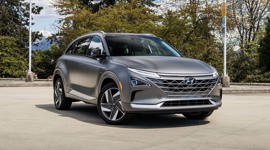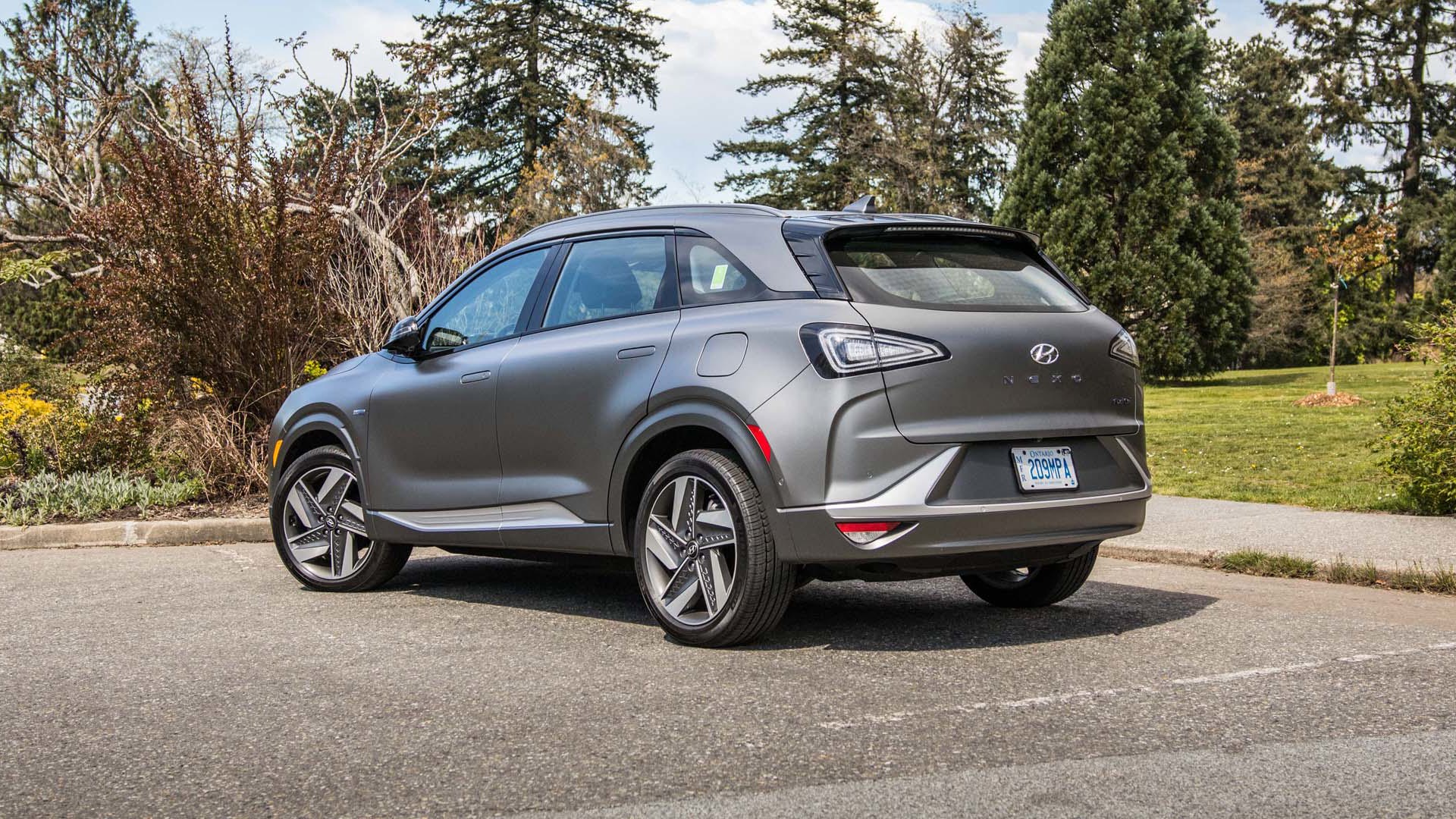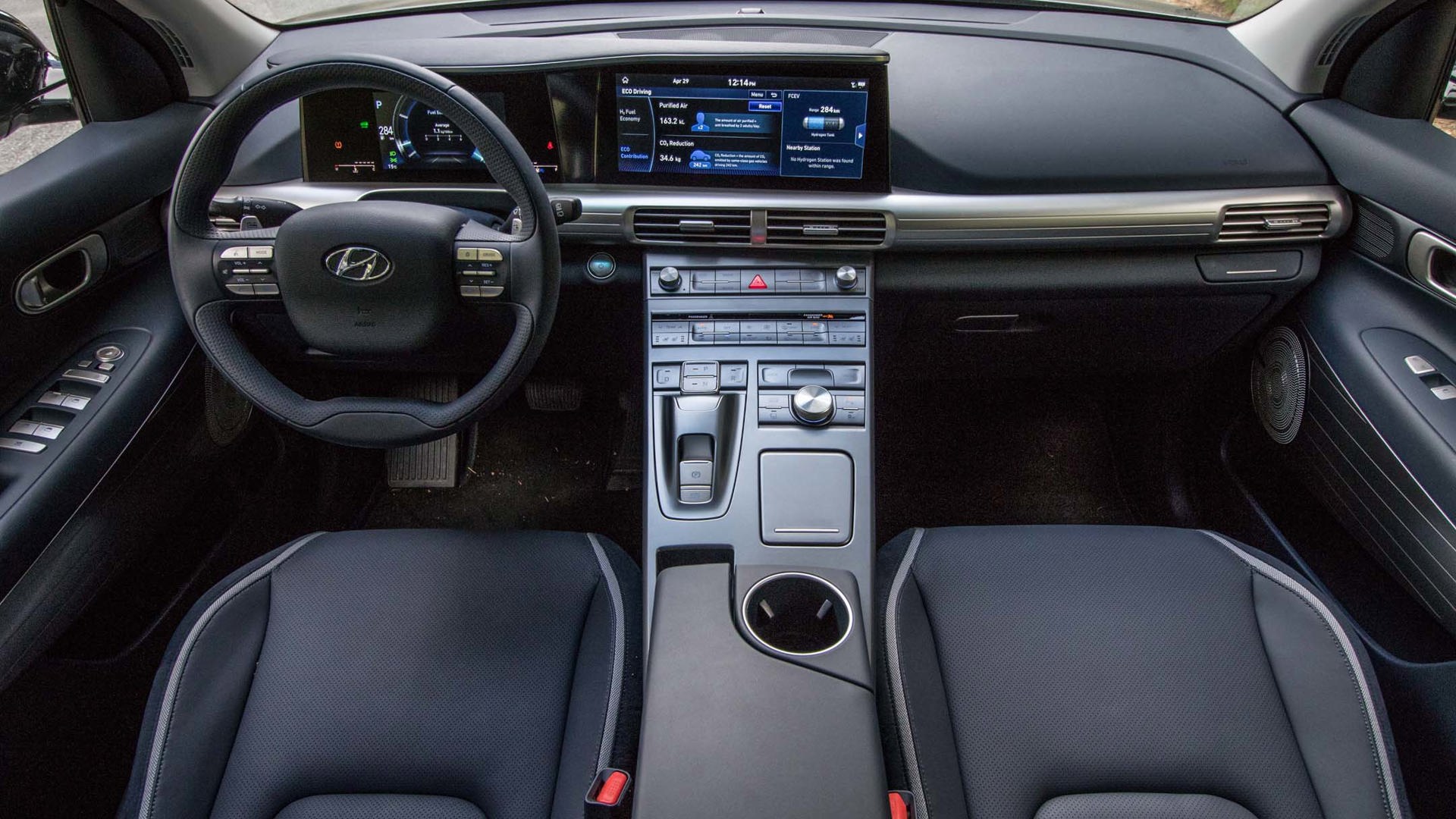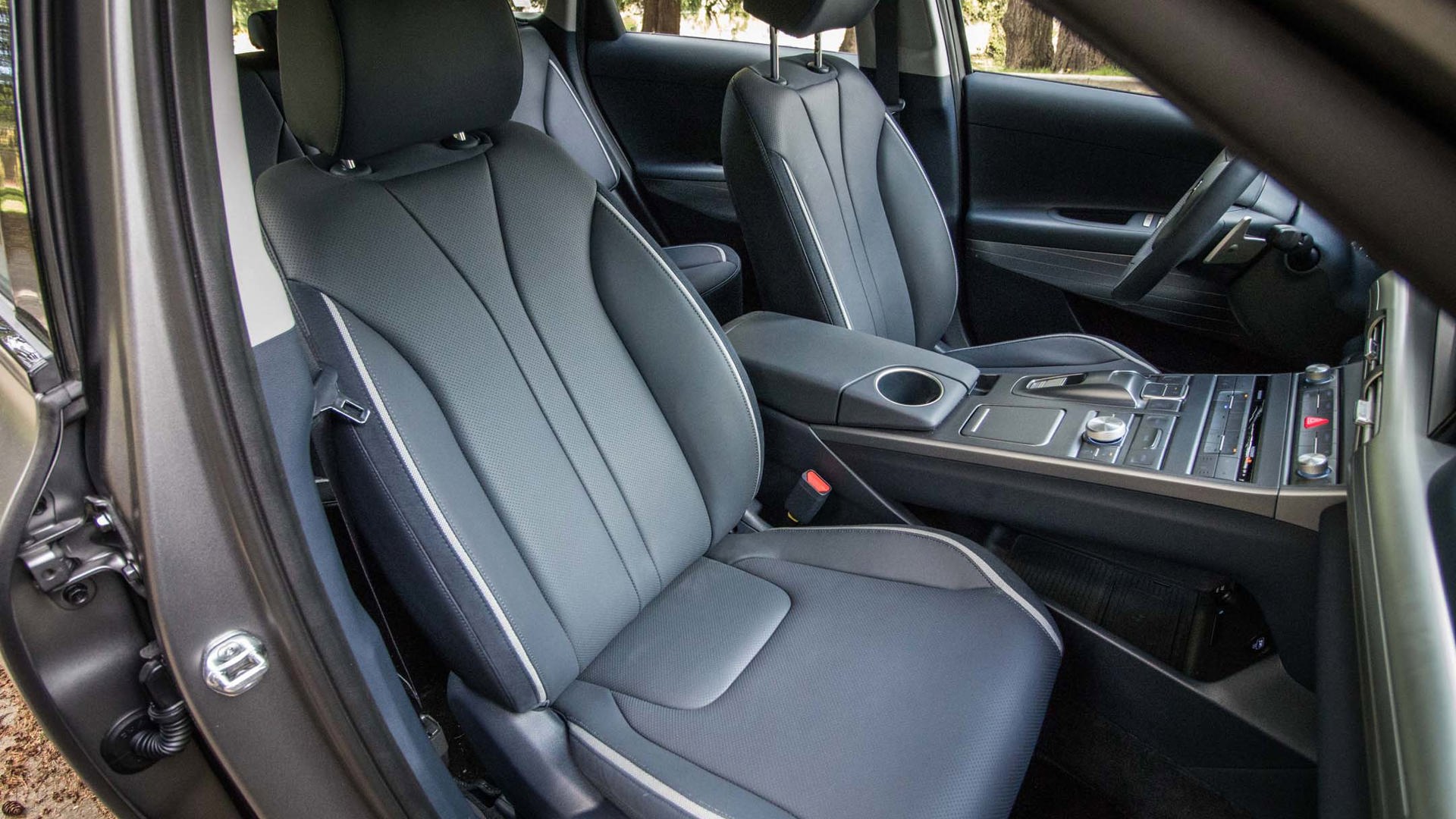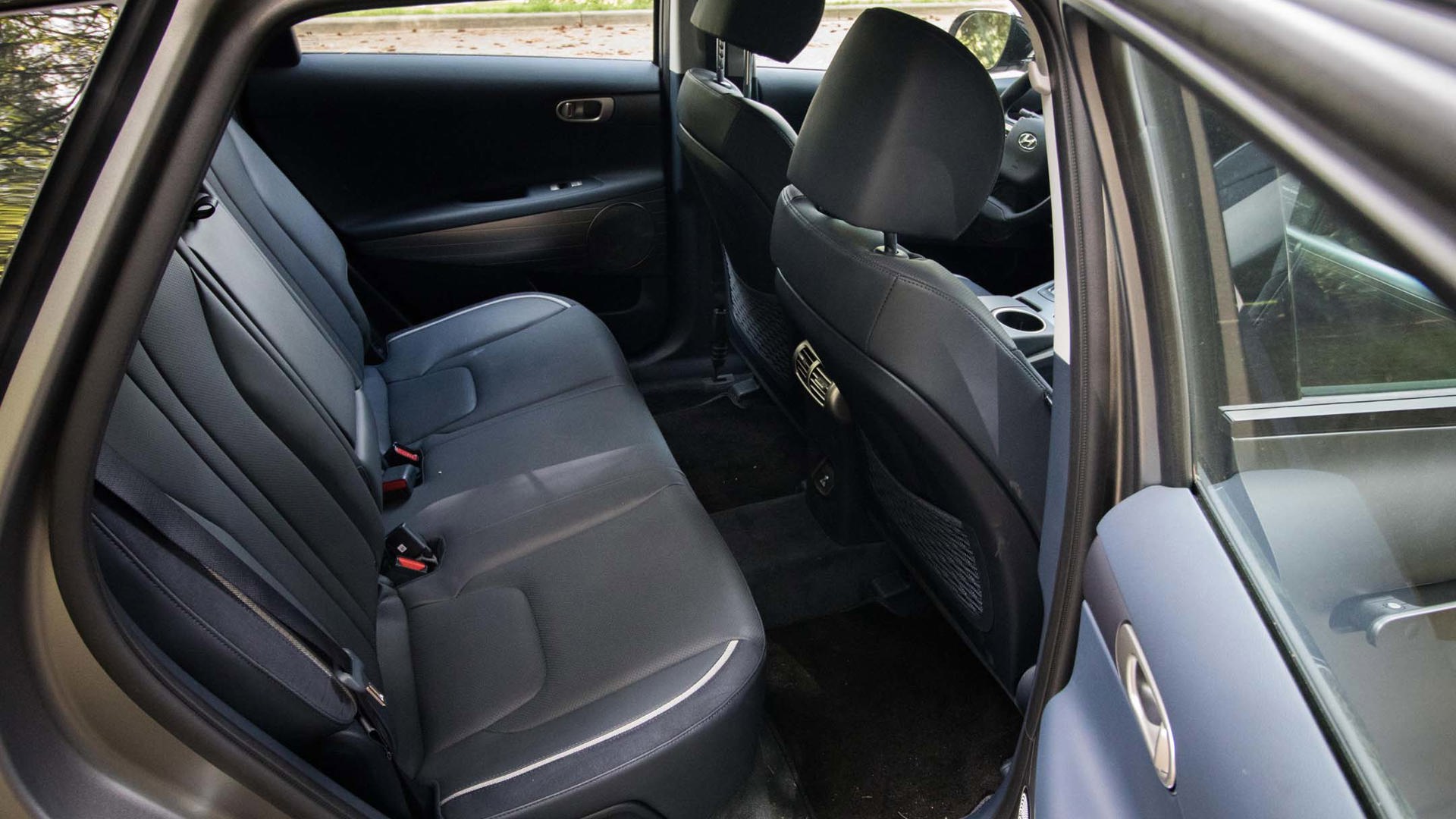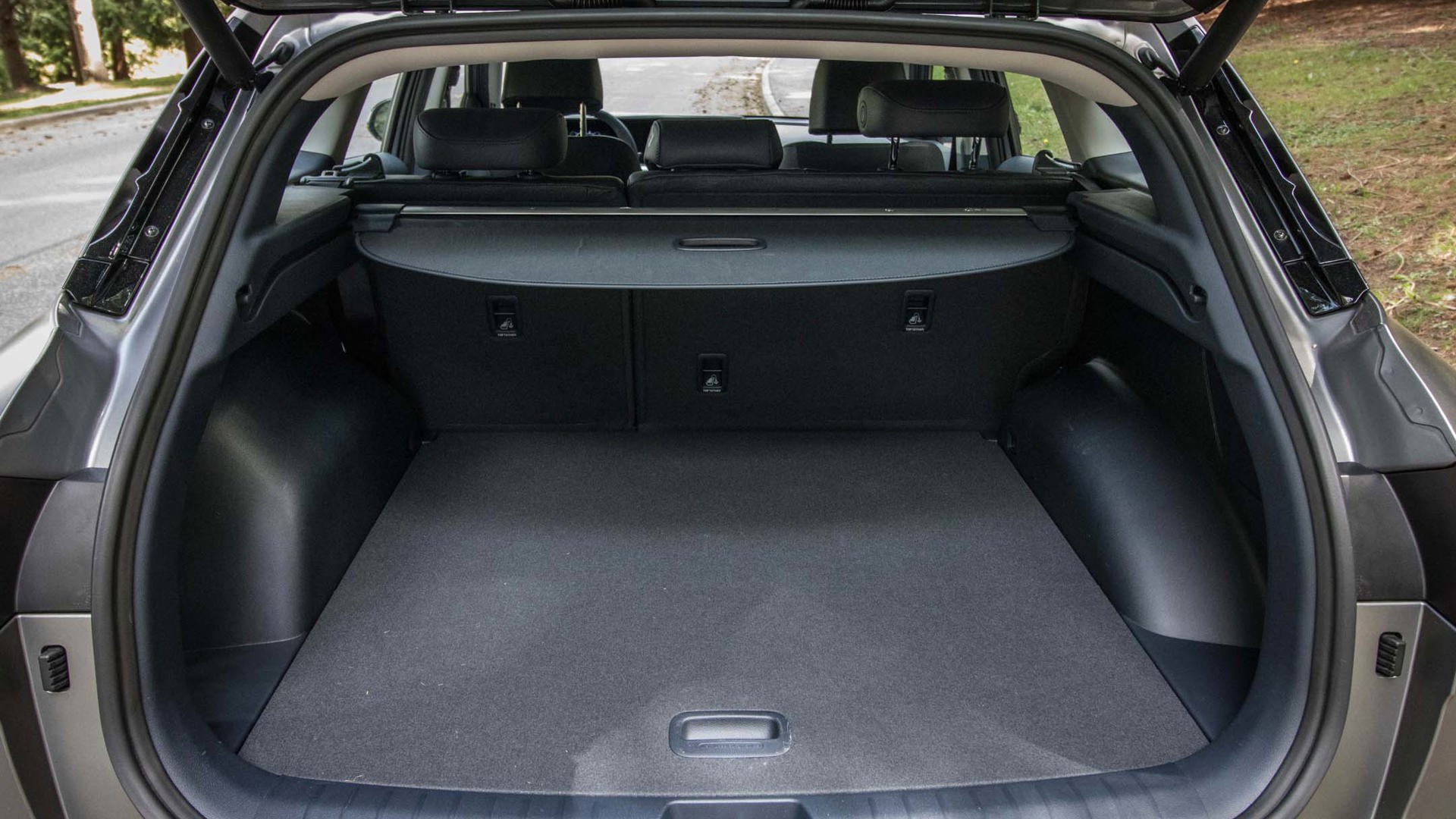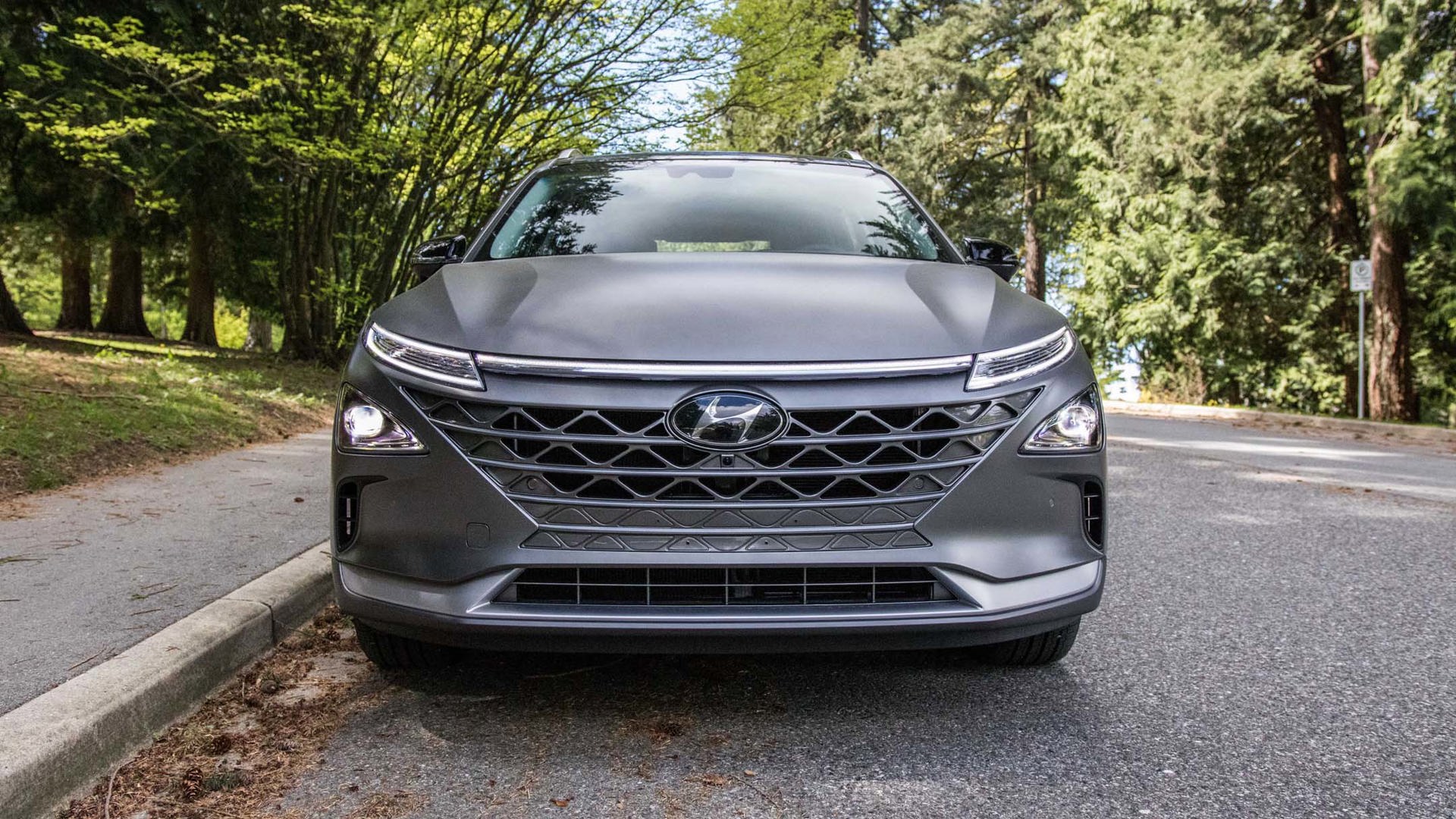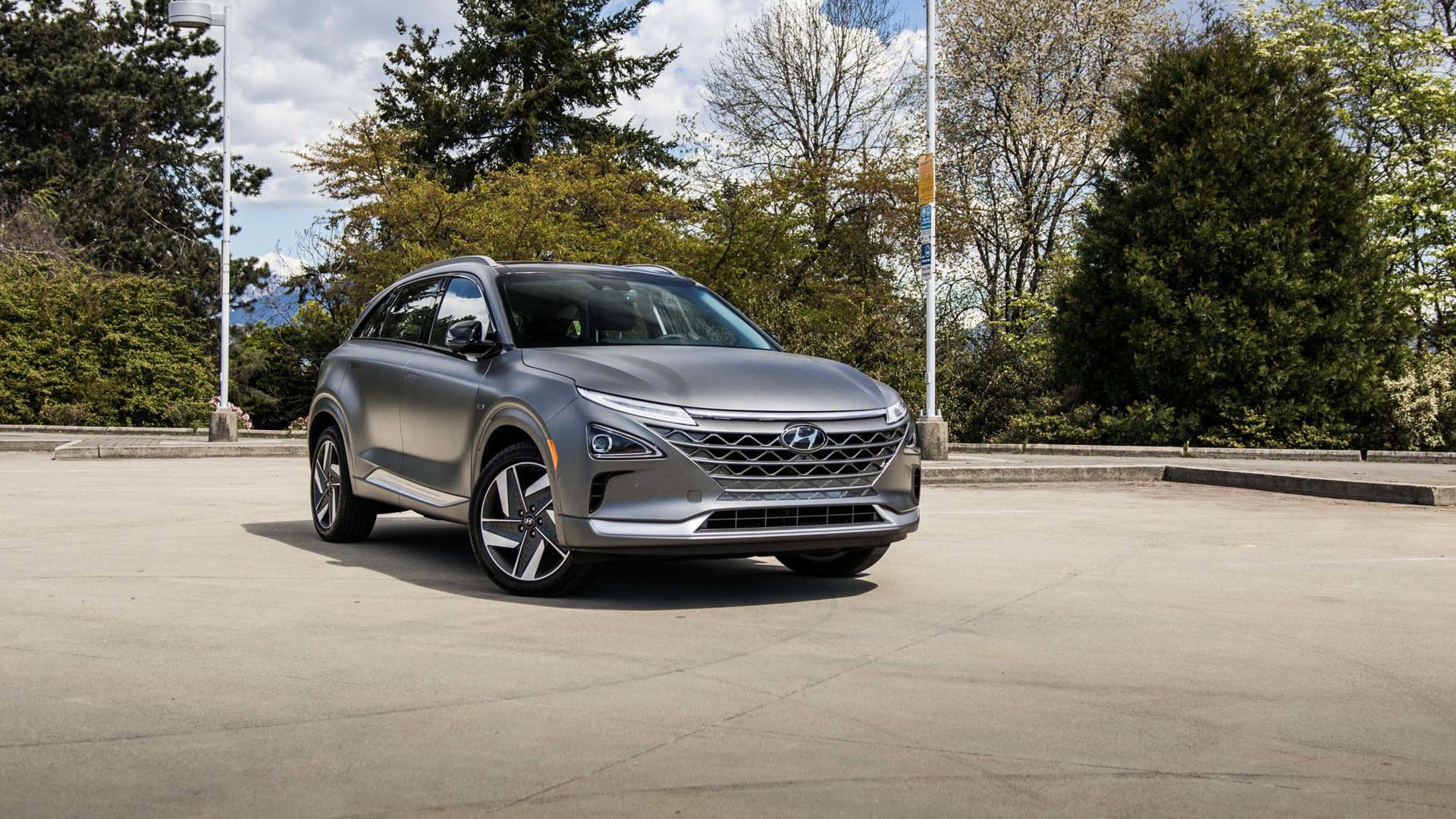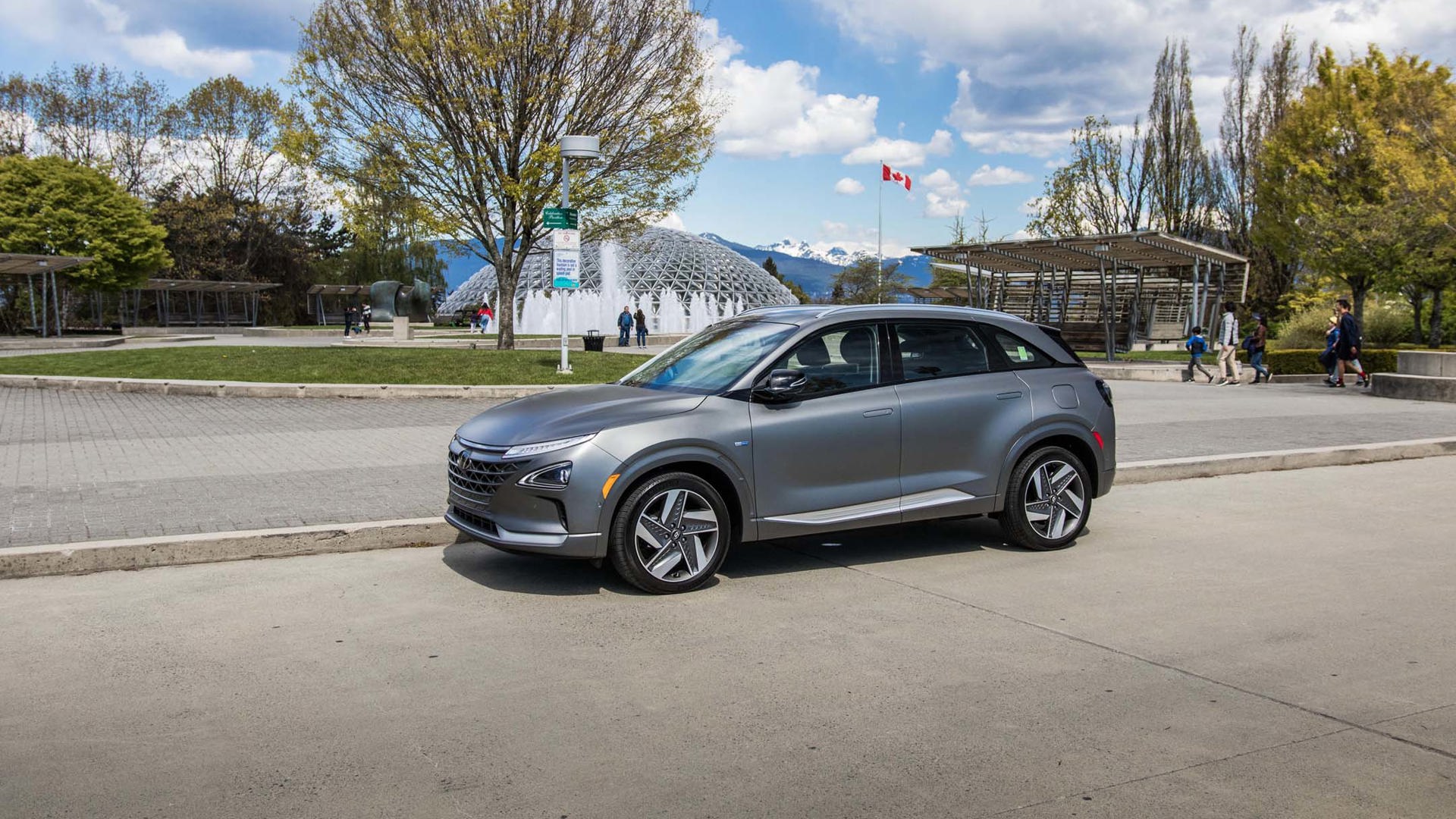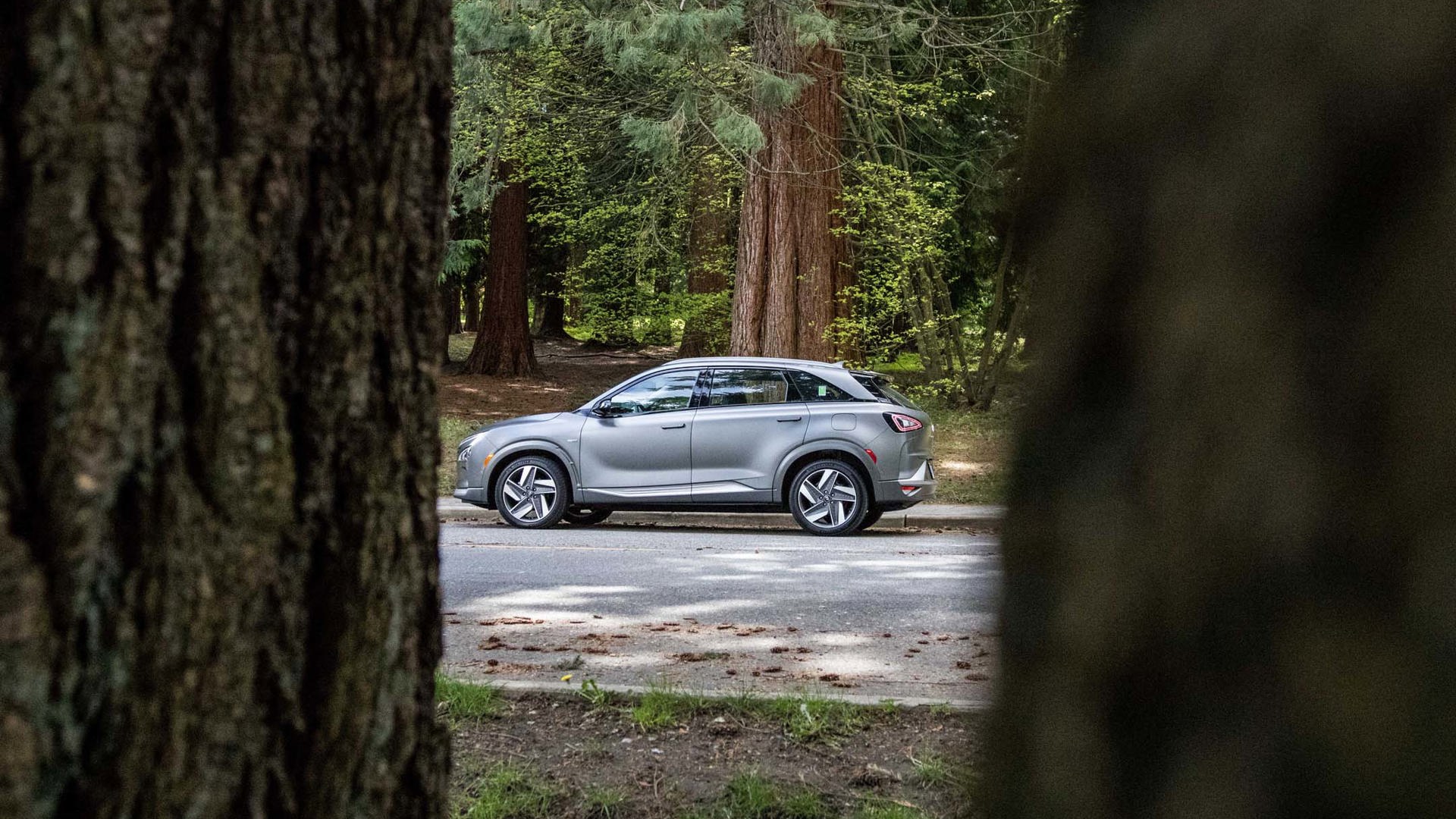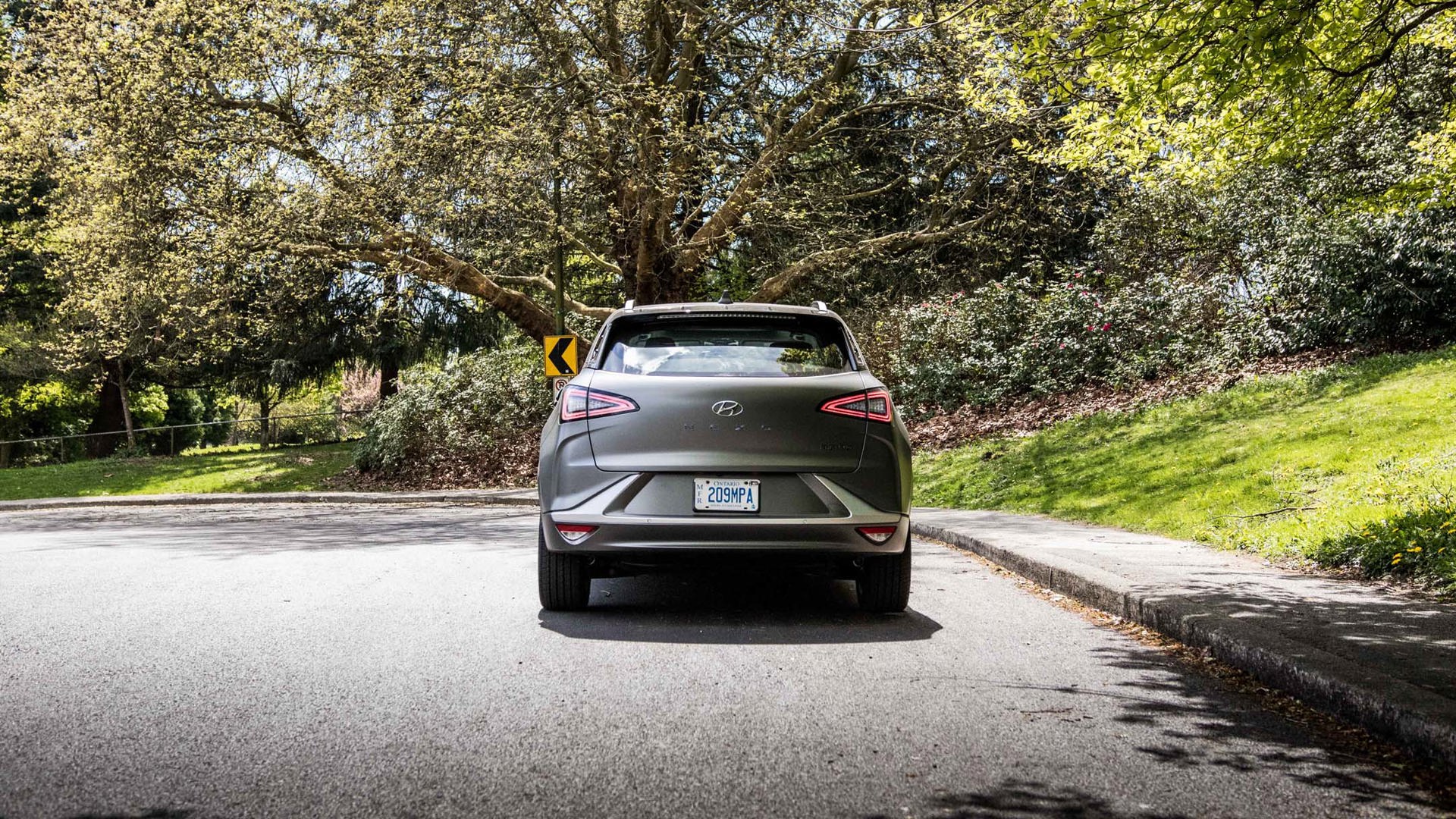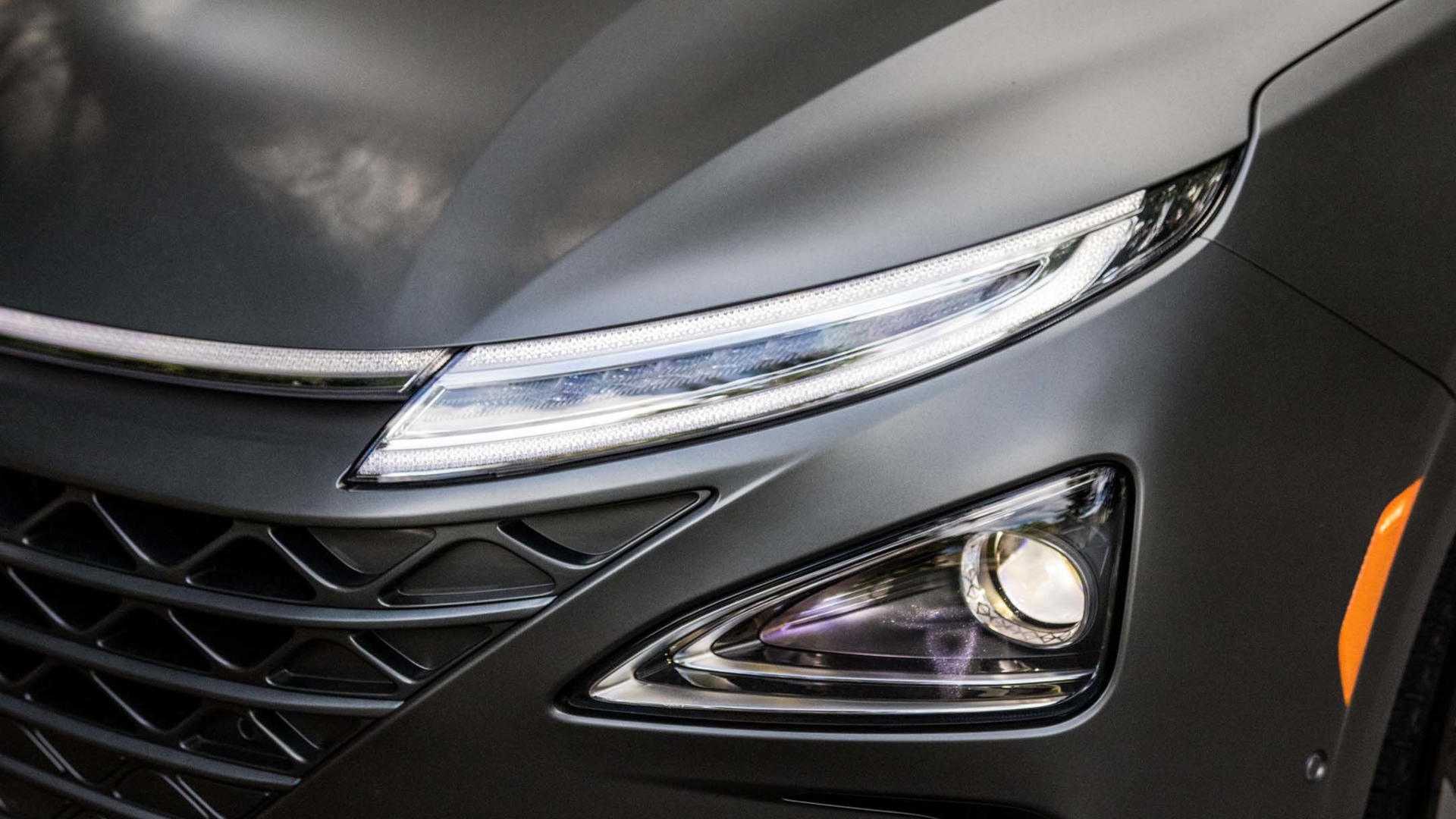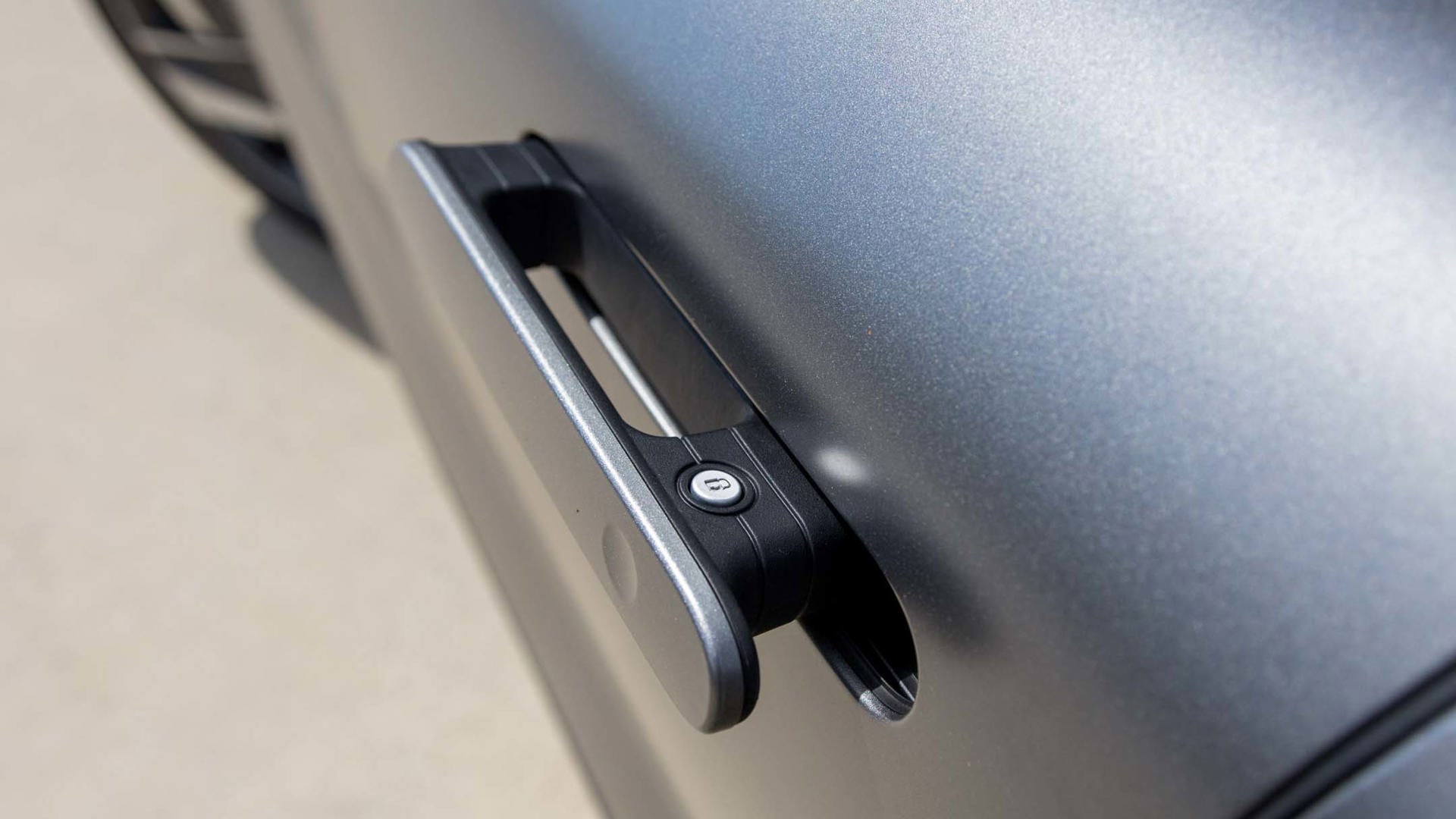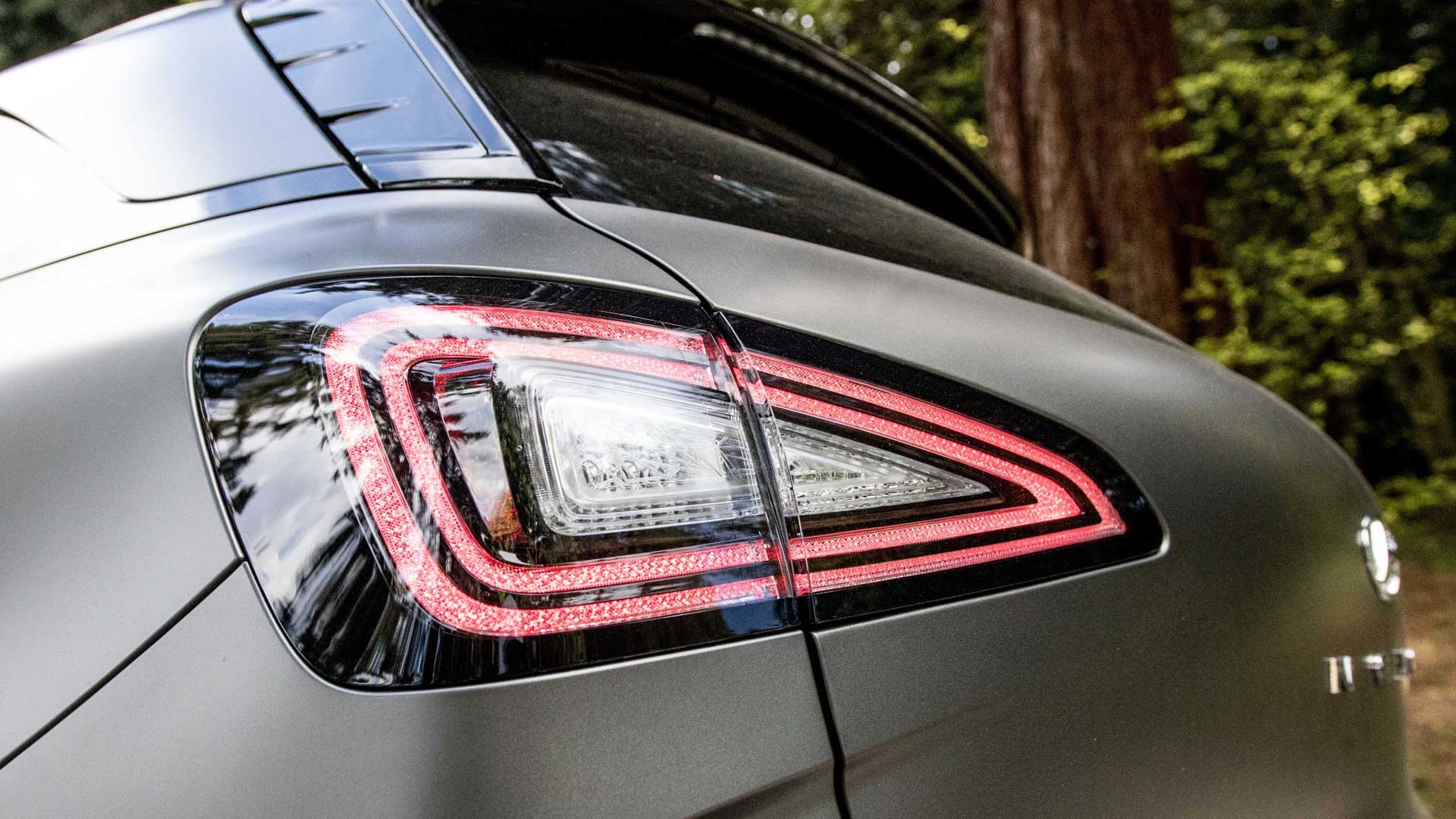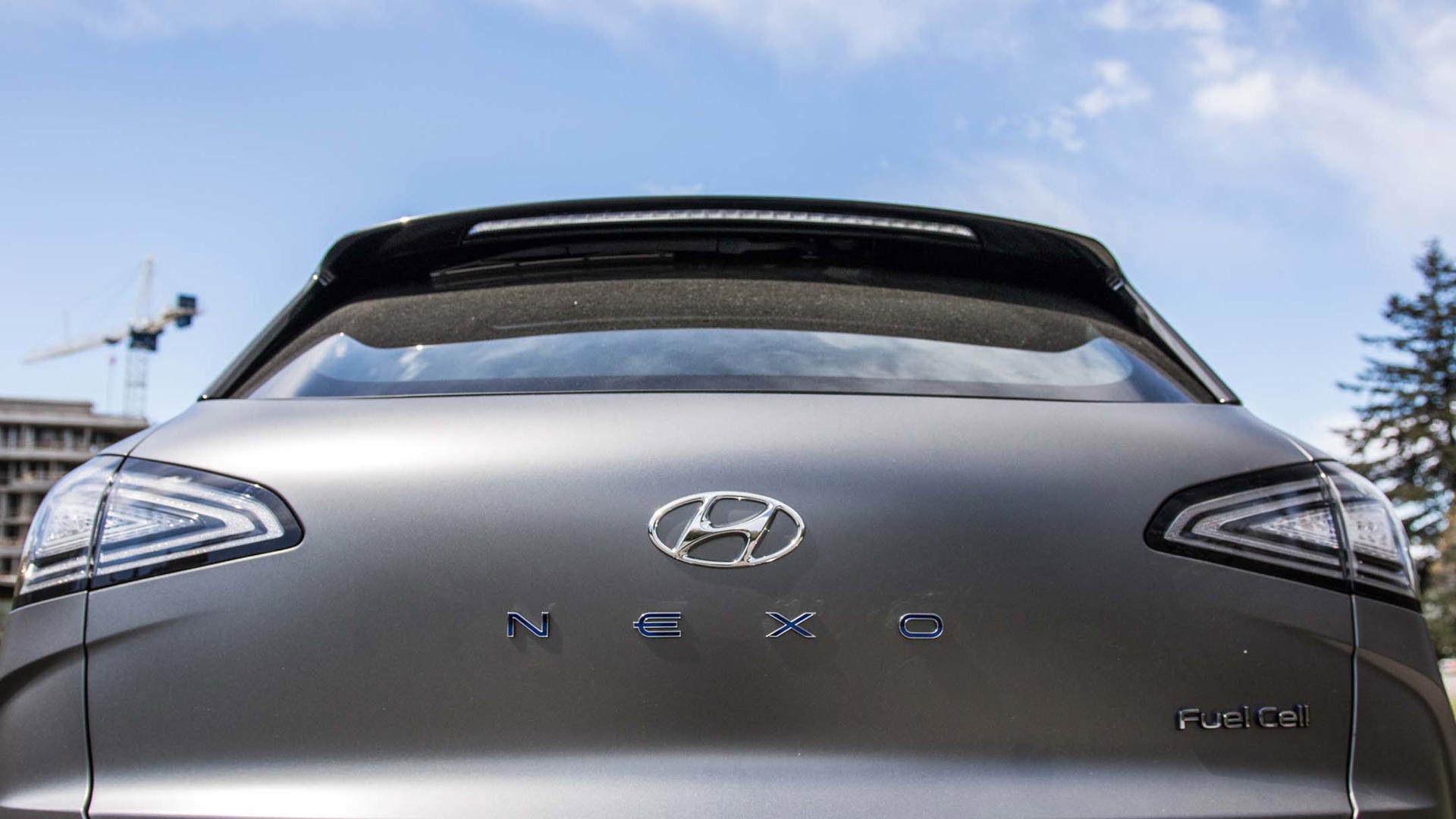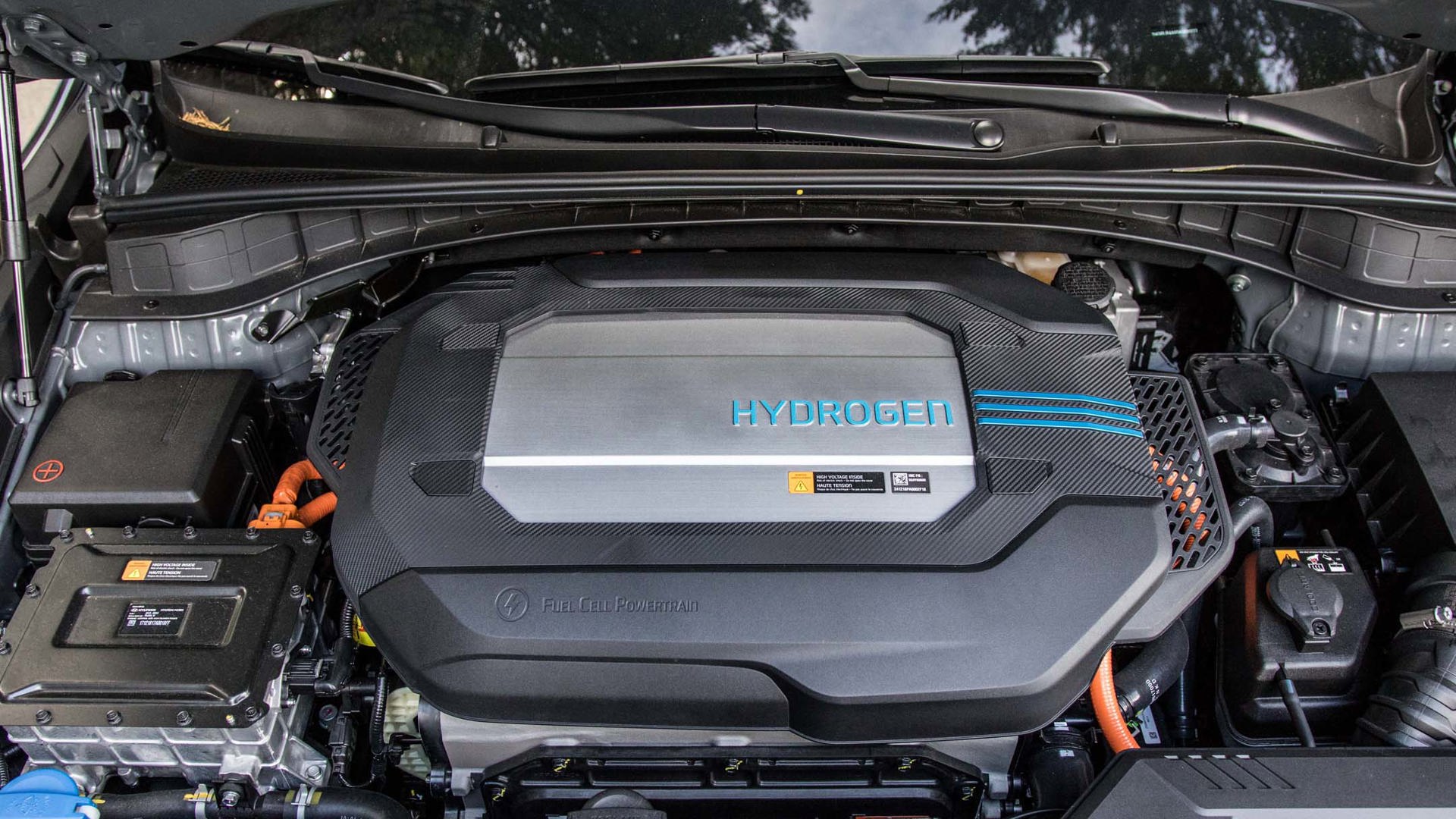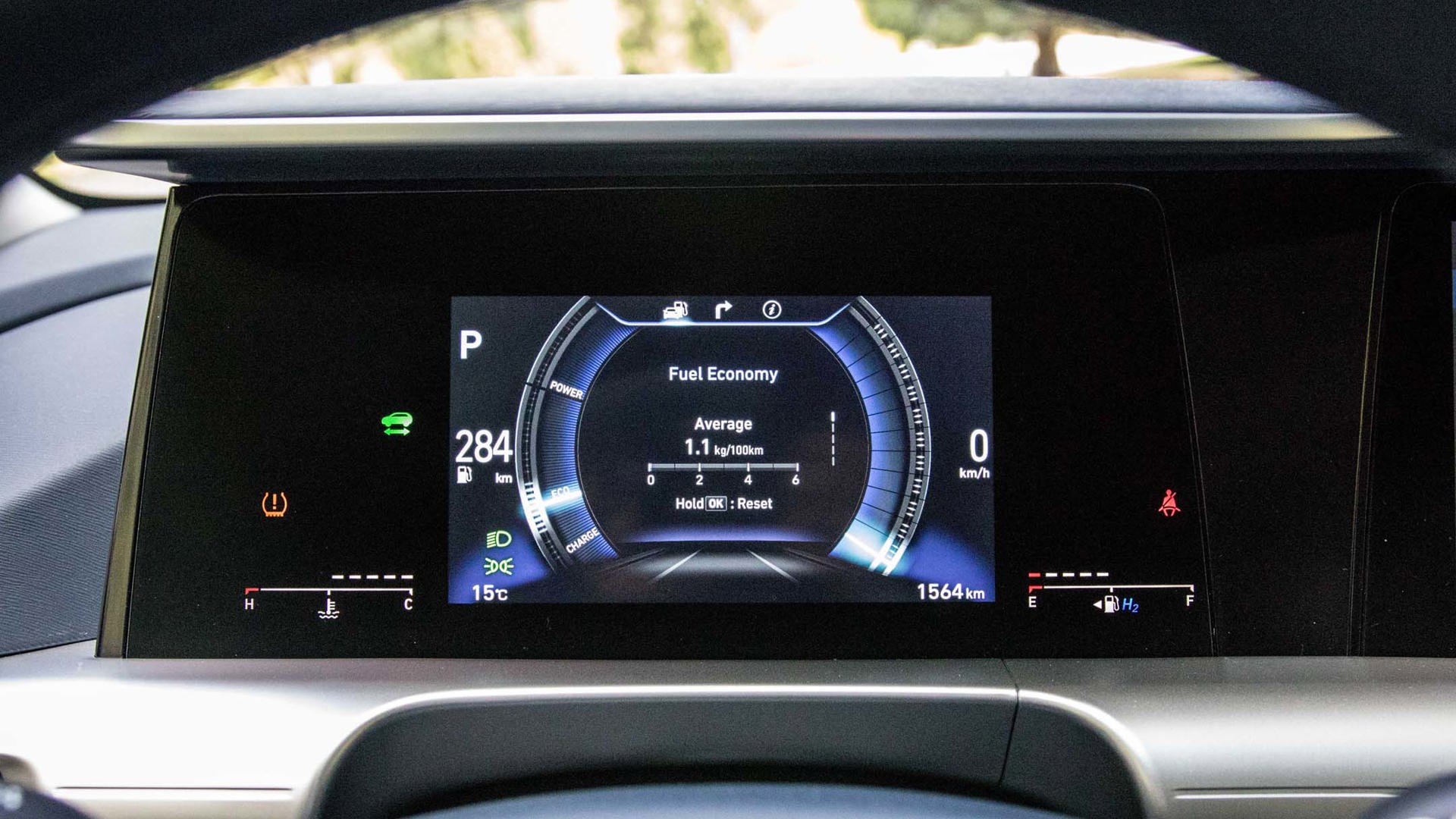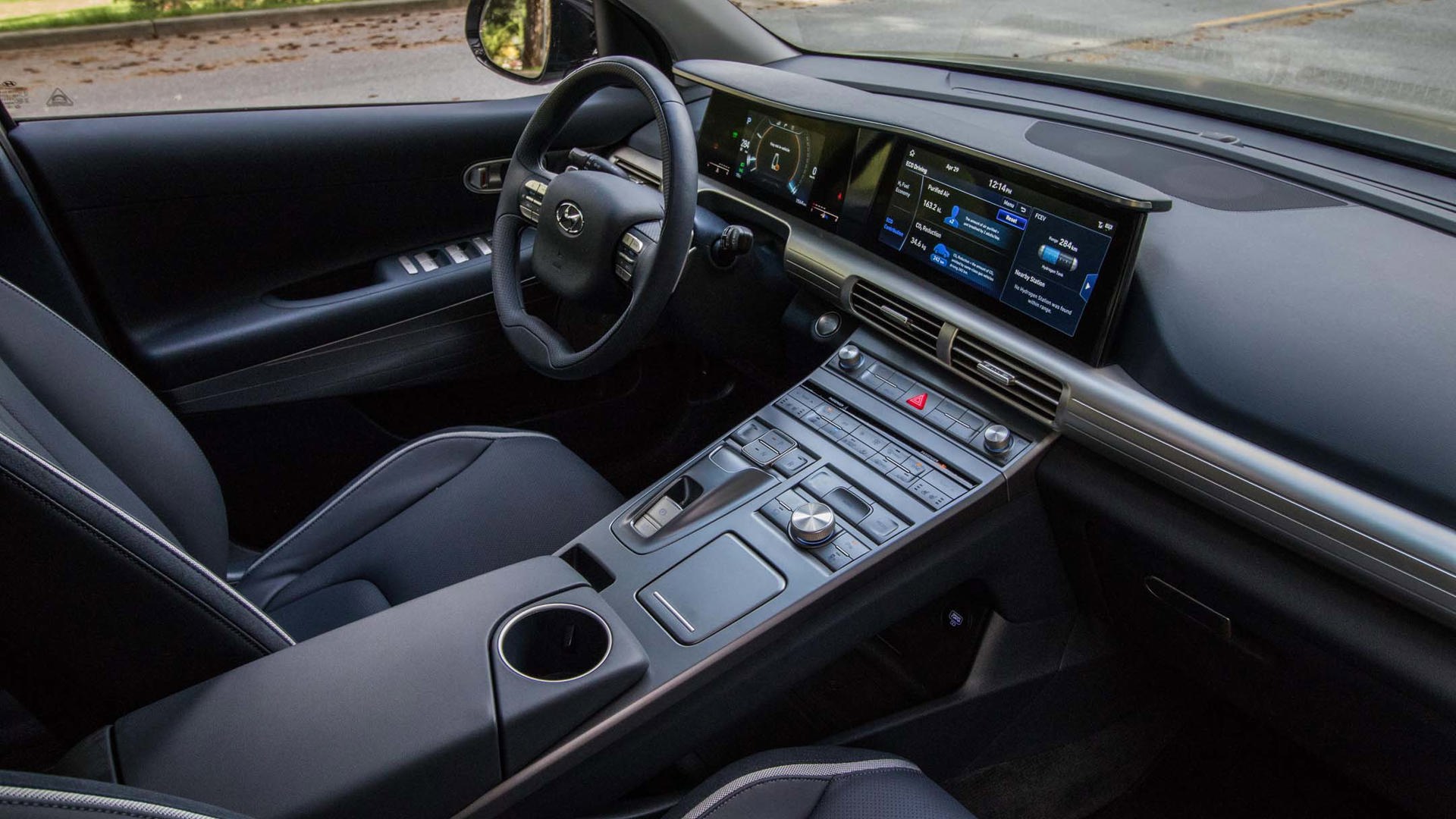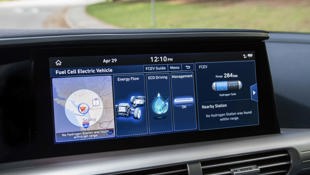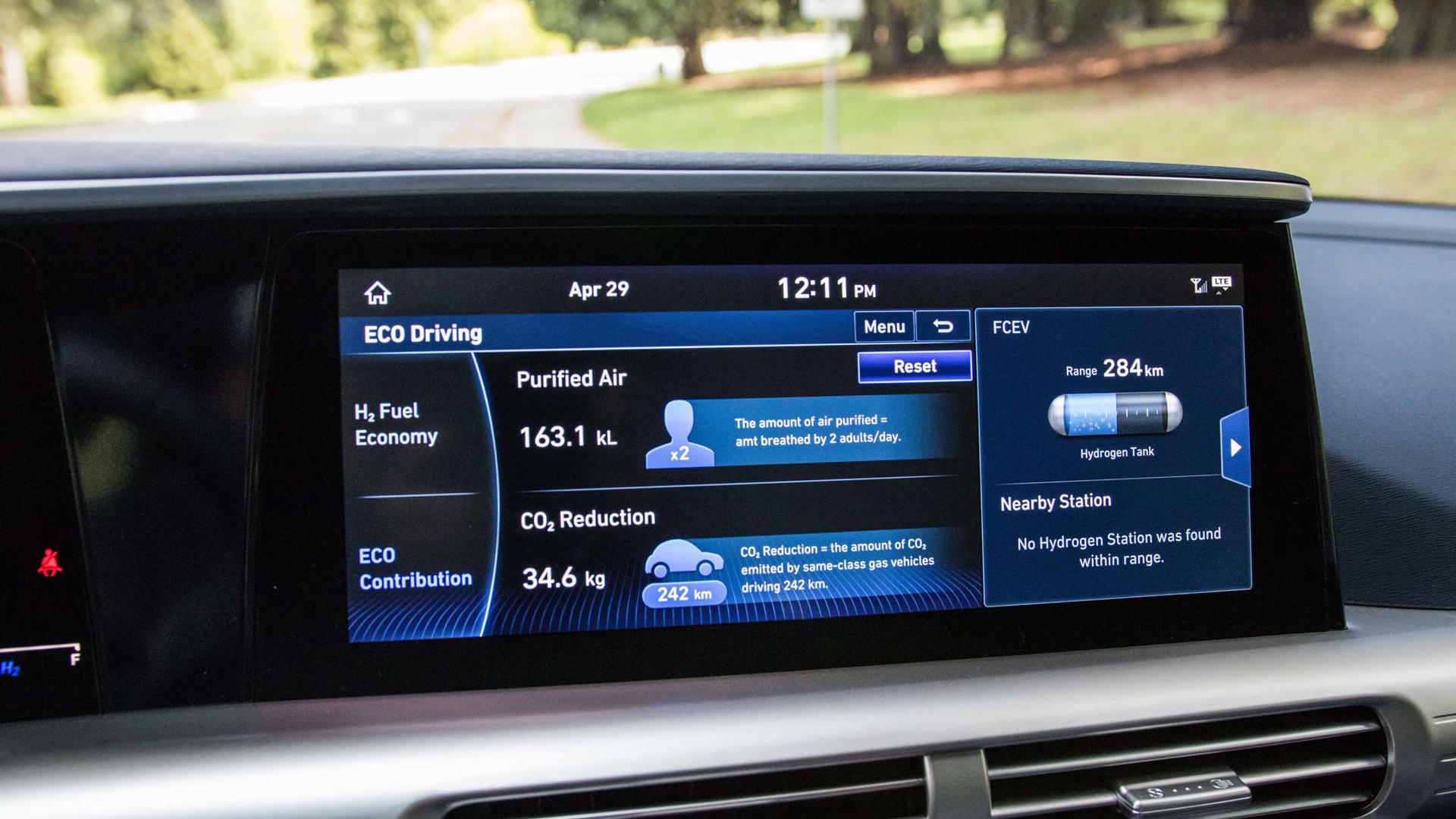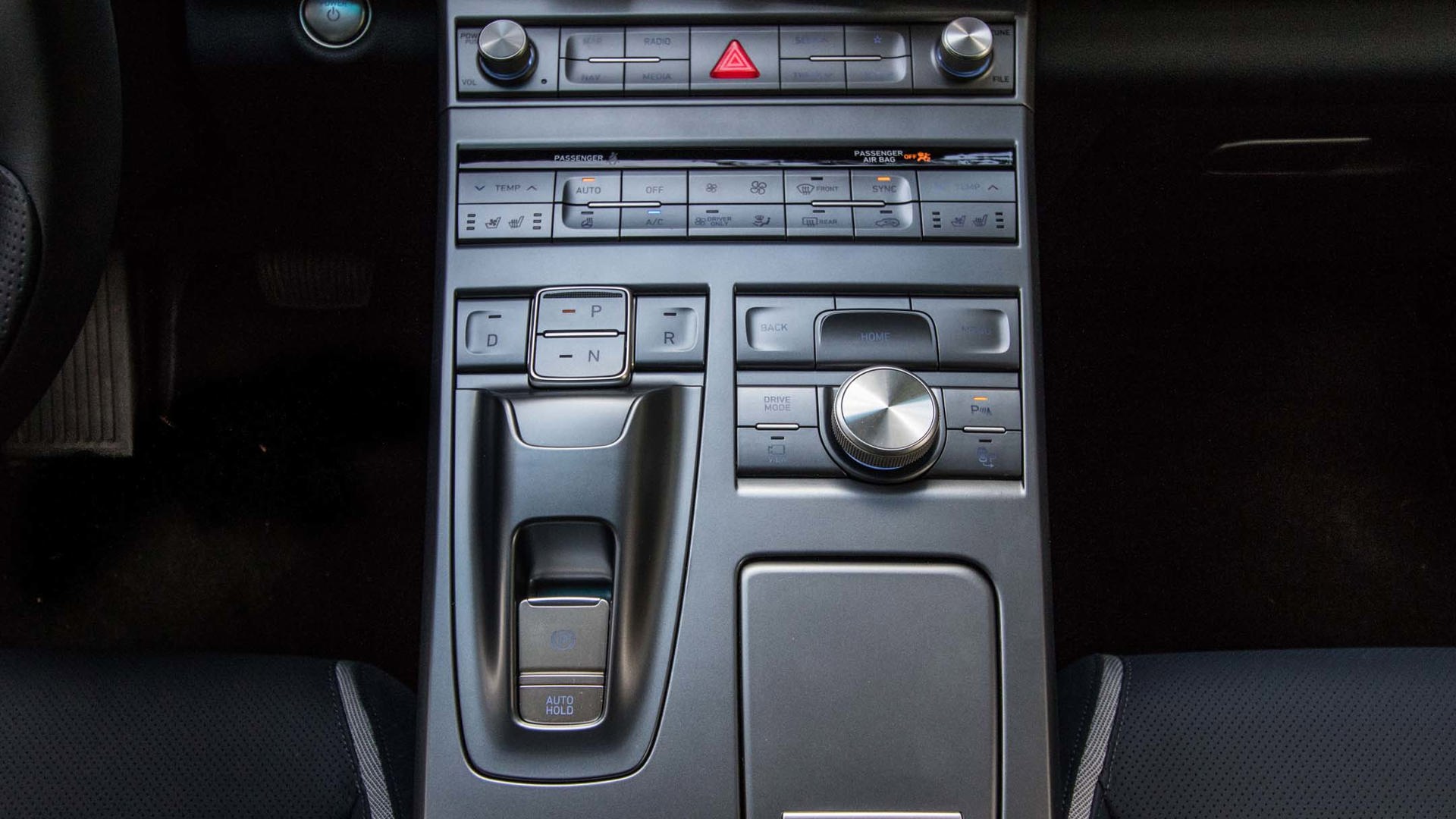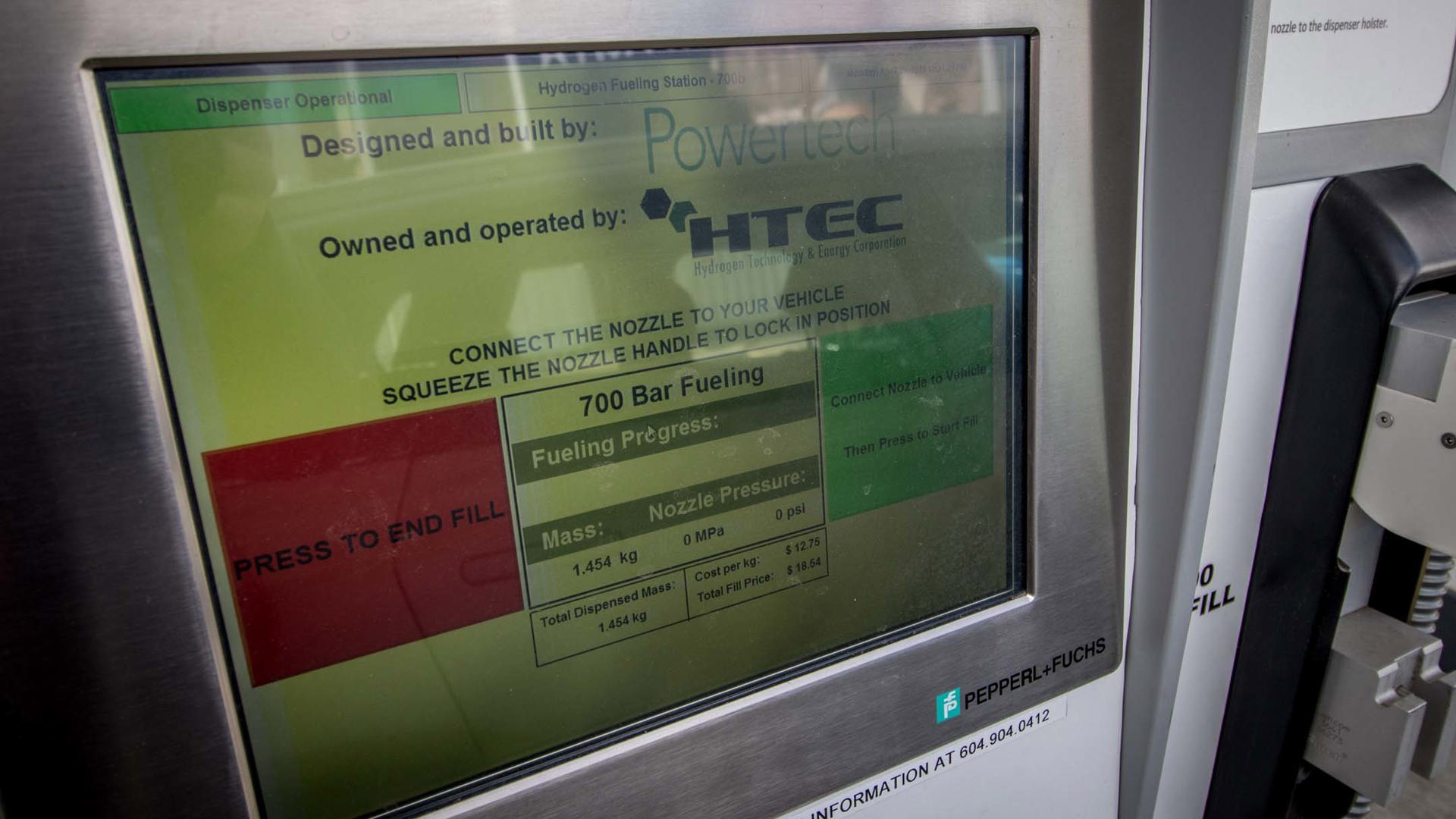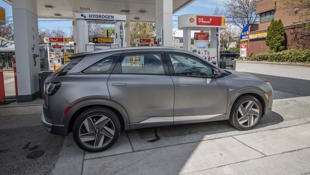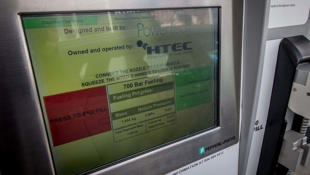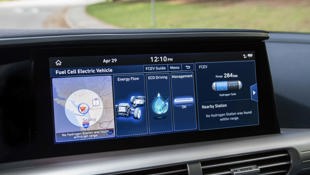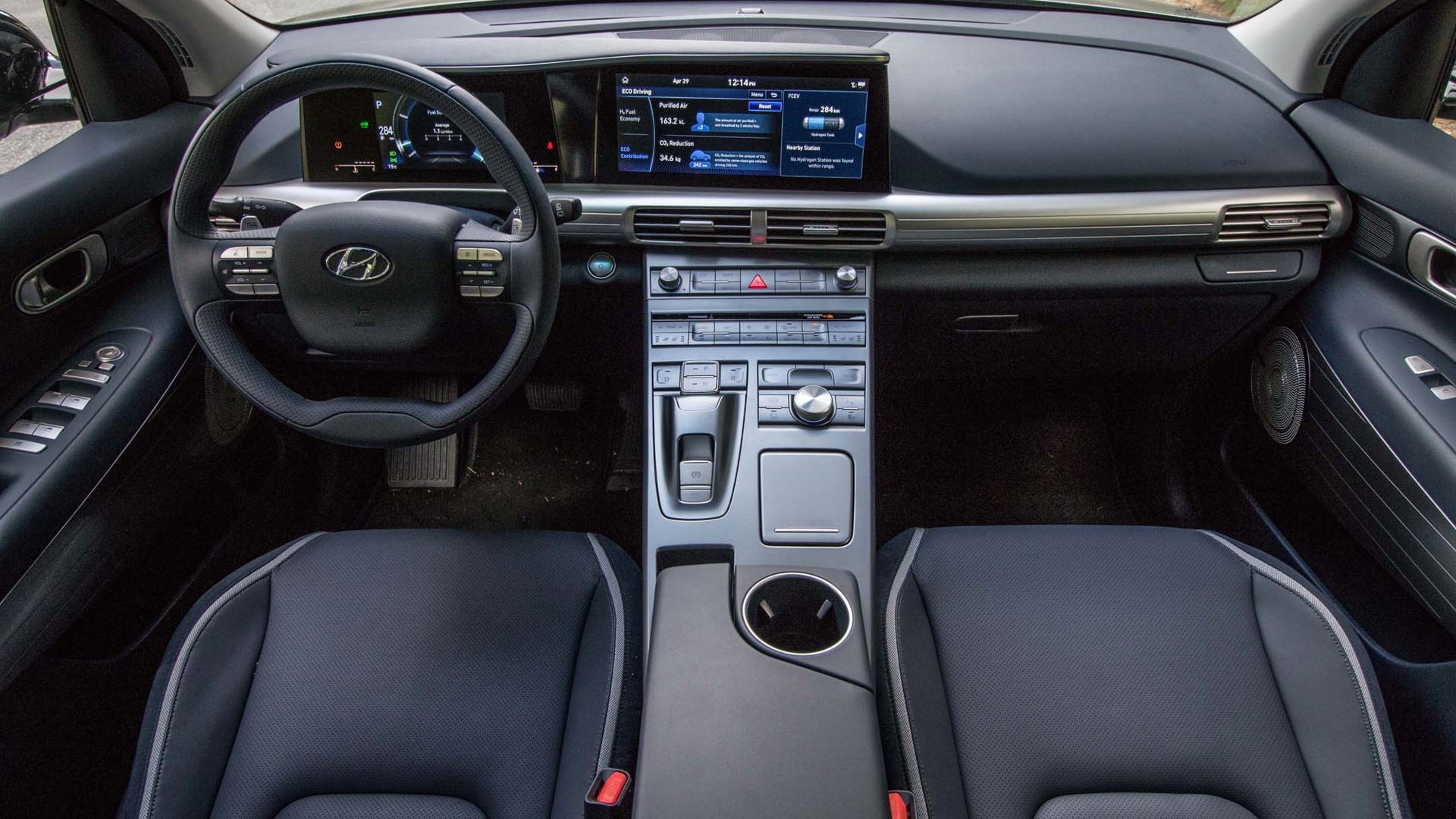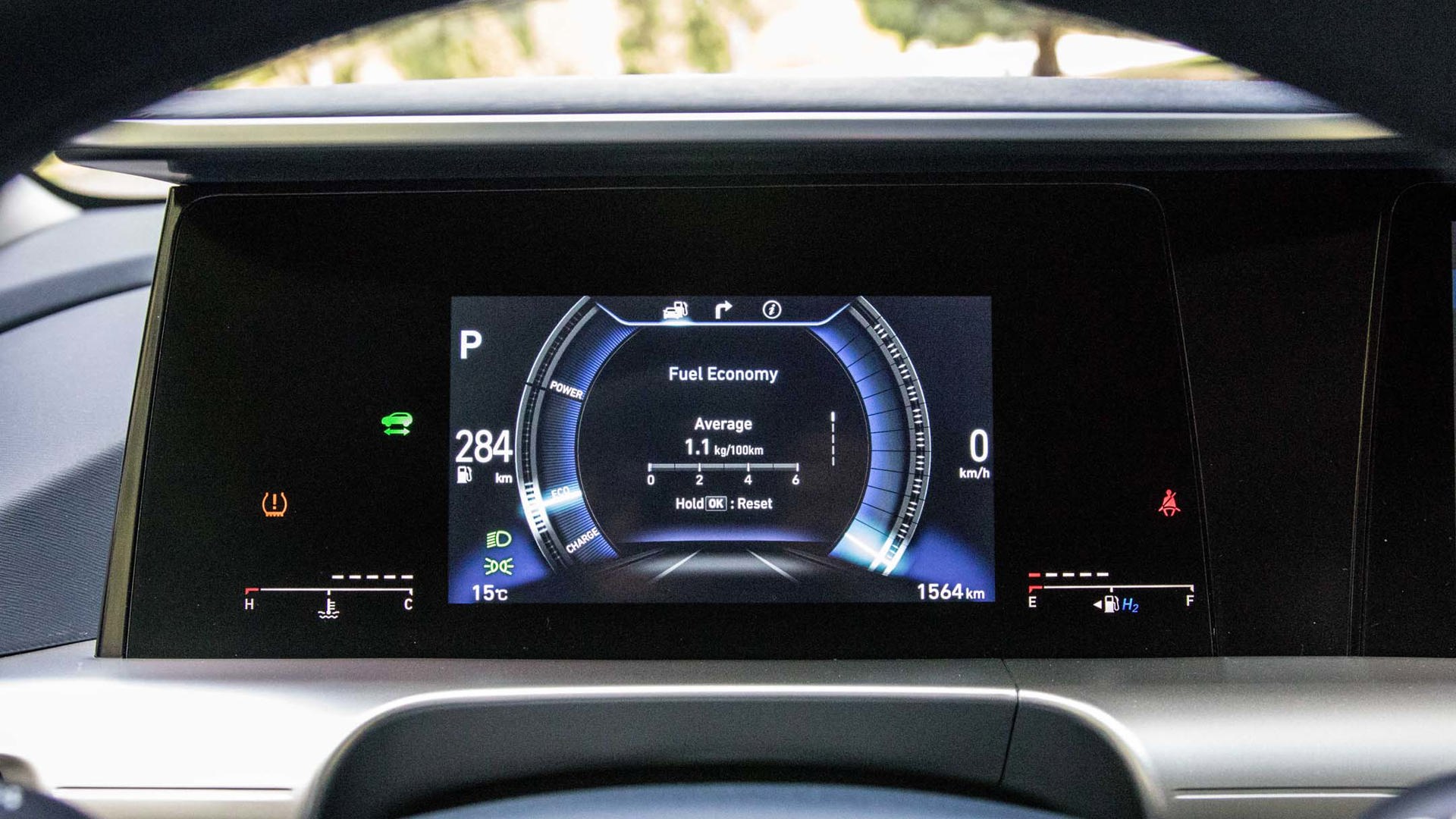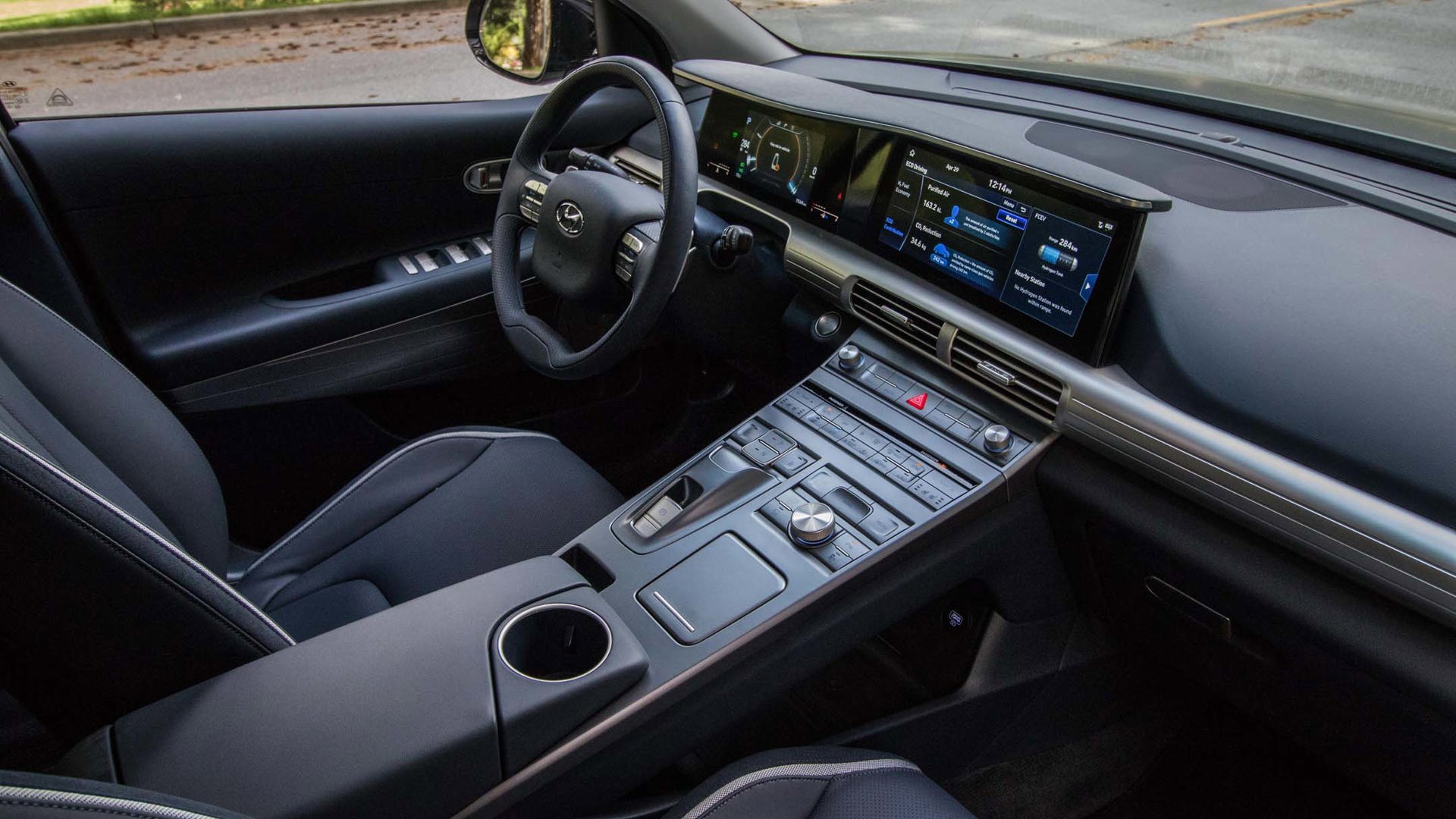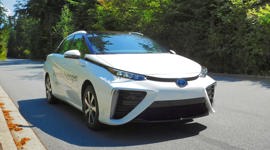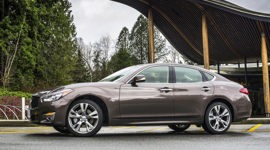 AutoTrader SCORE
AutoTrader SCORE
-
STYLING8/10
-
Safety8/10
-
PRACTICALITY8/10
-
USER-FRIENDLINESS5/10
-
FEATURES8/10
-
POWER7/10
-
COMFORT9/10
-
DRIVING FEEL7/10
-
FUEL ECONOMY10/10
-
VALUE6/10
The hydrogen-powered 2019 Hyundai Nexo could be the future of clean motoring, but the present might not be ready for it. If every gas station sold H2, it’d make perfect sense. That’s not the case, which makes this car interesting, but not really a pragmatic choice overall.
Styling: 8/10
With a typically unremarkable crossover silhouette and discreet “Fuel Cell” badging, the Nexo should have faded into the background. Instead, any time I parked it, I was immediately approached by a curious onlooker.
Further, when I brought the car as a rather large show-and-tell object to my kid’s Grade One class, several youngsters dubbed the large front grille, LED accenting, and matte grey paint “Cool!” Like most alternative fuel vehicles, some elements on the Nexo seem to have been made weird for the sake of standing out, but overall it’s far less of a visual oddball than the Honda Clarity or Toyota Mirai.
Safety: 8/10
Better than the Hindenburg? Compressed hydrogen is the sort of thing to make the average consumer nervous, but the Nexo’s trio of Kevlar-reinforced carbon-fibre tanks are tougher than your average fuel tank. The rest of the vehicle does an outstanding job of protecting occupants in a crash, earning a five-star rating in stringent European NCAP testing.
Further, the car comes with Hyundai’s full suite of driving assists, including lane-keeping, collision avoidance/mitigation via automated braking, and blind-spot monitoring. The lane-keeping assist works well, but does shift around in the lane slightly.
Practicality: 8/10
If it’s of interest to consumers, it’s possible to fit sixteen Grade One students in the cabin of the Nexo, without anyone bursting into tears. And we didn’t even have to use the trunk. If Hyundai’s powertrain is forward-looking, then the vehicle that’s attached to it is entirely rooted in the present.
Cargo capacity is significantly above other fuel-cell vehicles, and the high crossover ride height provided good visibility. Front-wheel drive and car-like ground clearance means you shouldn’t expect any soft-roading chops from the Nexo, but as an urban runabout, it’s spacious and useful.
User Friendliness: 5/10
A full week of using the Nexo as the family commuter required no more thought than operating a Honda CR-V or a Toyota RAV-4. However, points were deducted for one minor infraction, and one very large fly in the ointment.
First, the Nexo’s centre console appears to have been designed for mixing the latest single from one of Korea’s popular K-pop bands. It is absolutely festooned with buttons and knobs, to the point that it could also double as a toddler activity centre. A bit of familiarity that came with use made life easier, but the monochromatic grey and smallish button script makes the interface oddly complicated to use.
However, the real issue with the Nexo, and vehicles like it, is that public hydrogen refuelling is only just beginning to become available. On the plus side, there are several stations opening in BC, including one in my hometown of North Vancouver. Refuelling is theoretically a simple process, and would be ideal if you needed to park your car somewhere where plug-in capability was out of the question.
Yet when I went to refuel the Nexo at the end of the week, the pump partially filled the car, then threw out an error code. The issue was shortly fixed later that day, but was an example of early-adopter teething troubles.
Features: 8/10
As a mono-spec offering, the Nexo is lacking nothing. The 12.3-inch screen is easy to read and has all sorts of fun diagnostic information, but if you just use it as a standard navigation screen, it’s all very functional.
Everything uses Hyundai’s UVO infotainment system, which does well with voice commands, and is overall intuitive. The stereo sounds better than it probably is, thanks to the Nexo’s silent operation, and the aforementioned driving assists are standard.
Power: 7/10
Compared to hybrids and other fuel-cell vehicles, the Nexo has adequate acceleration. Pressing the accelerator for instant electric torque provides great point-and-squirt performance in urban setting, and if getting up to highway speeds is only slightly brisker than a plug-in Prius, it is at least very quiet.
Comfort: 9/10
Over very rough pavement or speed bumps, the Nexo’s considerable 1,875 kg curb weight can occasionally catch the suspension out with a rough transition. However, in all other cases it’s as comfortable as any other mainstream crossover.
Driving Feel: 7/10
Ever since those early fuel cells were crammed in public buses, performance hasn’t really been a fuel cell hallmark. And, as mentioned, the Nexo isn’t a straight-line machine. However, rather surprisingly, it actually handles quite well. The use of paddle shifters to control battery regen is a nice feature.
Overall grip is very good, and if the steering is relatively light, turn-in is good. It won’t touch a performance-oriented EV like a dual-motor Model 3, but there’s genuine competence here.
Fuel Economy: 10/10
Driver confidence further comes through in the way the Nexo consumes hydrogen. The simple chemical reaction, abetted by the layers of the fuel cell itself, sees two hydrogen atoms combine with a single atom of oxygen, producing water and electricity. No other emissions result, and the Nexo’s filters are so effective at scrubbing out impurities that the air in its wake is actually cleaner.
That’s a nice talking point, but the real boon to consumers is that hydrogen range is less affected by cold than battery life, even when you’re parked outside at -30°C. The Nexo’s displayed range was so consistently accurate, than it made for a much more relaxed driving experience.
Value: 6/10
The Nexo’s poor value score has little to do with its engineering or capabilities. While technically brilliant, with a longer emissions-free range than pretty much anything on the market, the Nexo is still hamstrung by hydrogen availability. It’s also tricky to gauge what the used market might be like for resale. Like EVs on the market, the Nexo is supported by rebates, earning the maximum subsidy in the provinces where it is available.
Conclusion
A weird hybrid between thought-free motoring, and potential early adopter headaches, the Hyundai Nexo is a pricey way to drive nearly emissions-free. Once the infrastructure gets there, it’ll make a great deal more sense. The caveat of course being: if the infrastructure gets there.
| Engine Displacement | 135 kW AC motor |
|---|---|
| Engine Cylinders | N/A |
| Peak Horsepower | 161 hp |
| Peak Torque | 291 lb-ft |
| Fuel Economy | N/A |
| Cargo Space | 838 / 1,600 L seats down |
| Model Tested | 2019 Hyundai Nexo |
| Base Price | $73,000 |
| A/C Tax | $100 |
| Destination Fee | $1,905 |
| Price as Tested | $75,005 |
|
Optional Equipment
None
|
|
